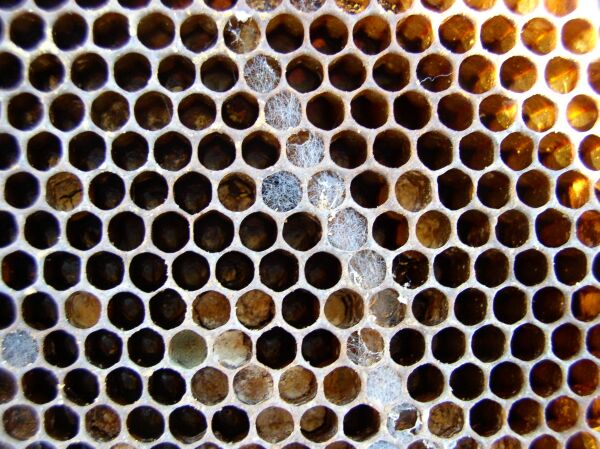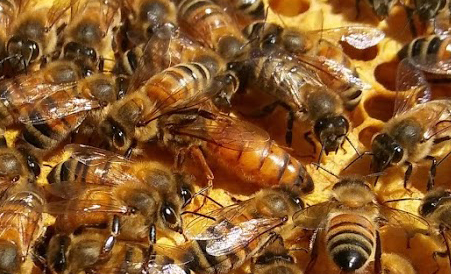So, you have finished your first year as a beekeeper and you have a lot of drawn comb in boxes that currently have no place on your active hives and now the question is, how should you store it so it is in good condition when needed next year. Maybe that thought had not crossed your mind yet and if that is the case I urge you to go out to your shed and check your comb, if you see worms, cottony trails through the comb or actual moths, you have a problem. Those are Wax Moths that are living in your comb and they do not intend on keeping their new apartment in condition good enough to retrieve their security deposit. They will burrow through all of the most used portions of the comb, laying eggs throughout and essentially ruining all of your bees hard work. If you ask a set of ten beekeepers what they do to battle Wax Moths and their damage, you will receive multiple different answers and they may all seem viable solutions. Here is the truth of it.

On beekeeping forums the most common answer to this question is to use Para Mothballs rather than the more commonly available regular grocery store Mothballs. The reason beekeepers think the Para version to be superior is the amount of time it takes to completely dissipate into the air, Para mothballs have a much shorter half-life and do not leave as large of a trace in the comb and wood of your hive. That may sound great, you’ve found the solution to this dreaded problem, but wait on the verdict, let’s look at what each version’s chemical component is.
Mothballs, the regular version that your grandmother uses in her dress closet, contains a chemical called Naphthalene. Naphthalene is a classified carcinogen and has been outlawed in the European Union since 2008. It exists as a crystal that sublimates (changes from a solid to a gas, skipping the liquid phase) into a gas that is toxic to both moths and moth larvae. If that were the end of it we may have found our answer, but there is more. Naphthalene in medium to high does in humans not only can cause cancer but also can cause confusion, nausea, vomiting, diarrhea, blood in the urine, and jaundice. So let’s suffice it to say, mothballs don’t belong ANYWHERE near your bee boxes.
Para mothballs are the more commonly accepted tool for battling wax moths but just because people use them does not mean it is ‘safe’ or ‘natural’. The aspects that makes them more acceptable are its reduced flammability and trace residue. The chemical in Para Mothballs that makes them effective is para-dichlorobenzene. That chemical, like its cousin naphthalene is toxic to moths and moth larvae and is listed by the State of California as “known to cause cancer”. Studies on humans have not been carried out but in animals given water laced with para-dichlorobenzene, liver and kidney tumors were developed. Even if we take out the cancer causing aspect, the fact that beekeeping websites make sure to say “Do not use on frames that will contain honey for human consumption this year”, or “air out for no less than one week before giving back to the bees” is enough for me to not go forward in using them to battle this problem. I pride myself in not putting anything into my hives that I would not eat and I most certainly would not eat para-dichlorobenzene.
Now we have ruled out regular mothballs and para mothballs, what else is there? Should we just let the wax moths destroy our bees hard work? No. The first thing to do is take an assessment, how many boxes or frames are showing evidence of wax moth damage? If it is one box and you have a healthy active hive, you can just let the bees take care of the issue. Make sure if you are going this route that you choose a very healthy and highly populated hive because if they ignore the box when you put it on, it will do no good in the battle with the wax moths. You can remove the box when you are certain all of the larvae have been removed and/or killed and store the comb in an airtight container (i.e. Rubbermaid or large heavy duty trash bag). If you have too many frames with evidence of moths to let your bees take care of it or if it is too late in the year to add another box to your hives, you need to find a freezer with some space. Take all of the frames or boxes that need treatment and freeze them for no less than 24 hours, 48 if you are being thorough. The cold will kill the moths, eggs and larvae and you can then move all of the equipment to the aforementioned airtight container to sit in wait until needed next Spring.
So, the bottom line is there IS an alternative to mothballs and it is not a difficult task. Freeze them if you have them, lock them out if you don’t.

